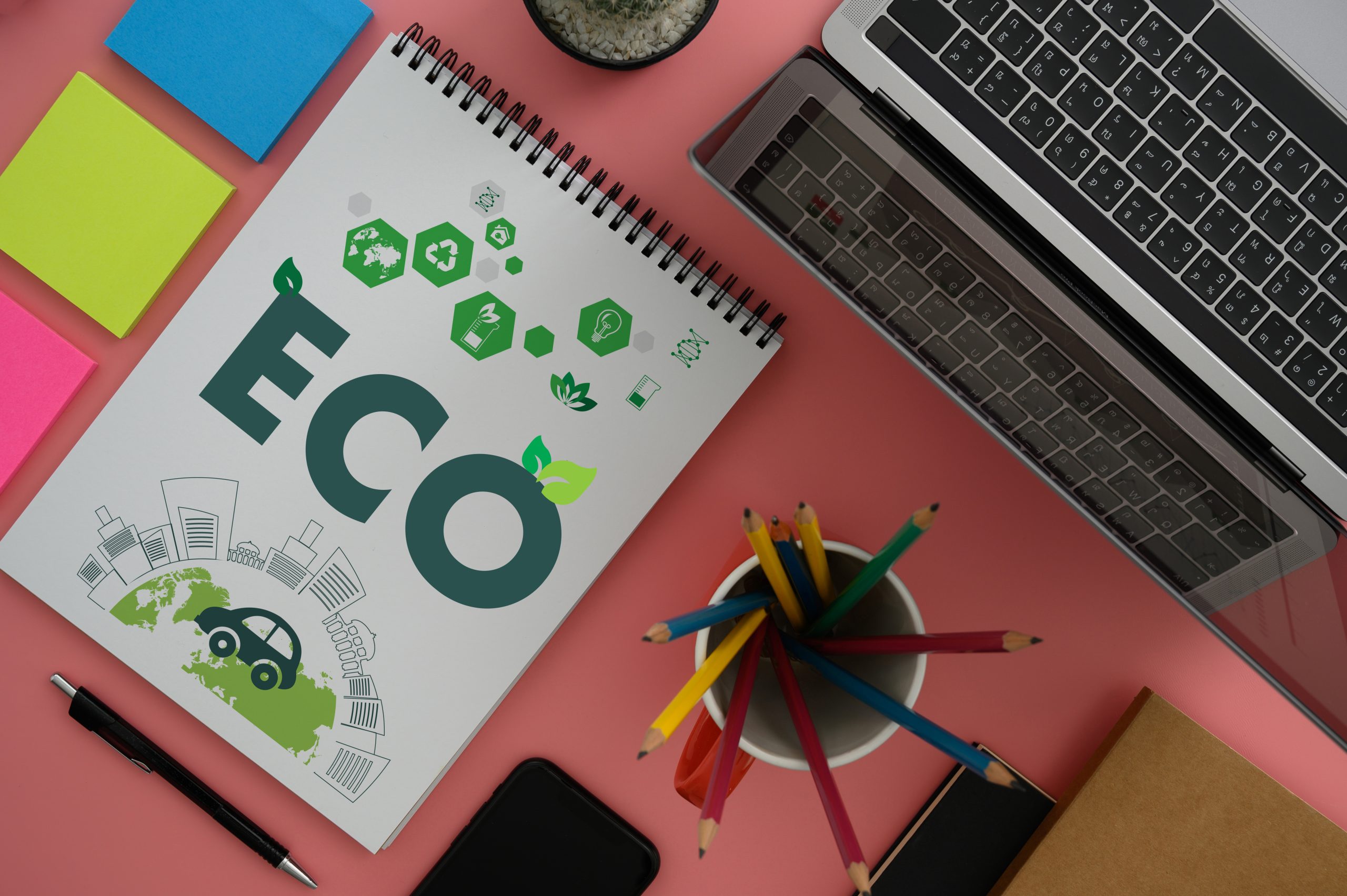As a design agency that ideates and creates layout for print and digital marketing, we have often stumbled upon clients asking for eco-friendly designs in print.
To begin this process, it is important to discuss eco friendly-options with your client early—before you lay your ideas on your virtual canvas. Give a lot of time to prepress as it becomes an essential aspect of your deliverable. It is a good practice to find a printer that has respectable communication between the designer and the printer not only improves the value but also sparkles the end product.
Design for Sustainability is a concept that promotes the creation of products and services that are environmentally friendly. It ensures that the product design process considers all aspects of sustainability, from sourcing materials to disposal at the end of its life cycle.
At Designcentric® we believe in designing for sustainability. Designing sustainably encourages us to think beyond immediate profitability but focuses more on long-term strategies. Being an eco-friendly designer means being conscious of the impact your work has on the environment and taking steps to reduce that impact. Here are some ways you can be a more sustainable graphic designer:
Use Fonts that use less ink for printing.
Although every graphic designer worth his salt loves typo play, the usage of fonts plays a very important aspect when the print quantity is large e.g. coffee table books, brochures, annual reports etc. Avoid serif fonts with little tails on the letters’ ends that use more ink. The cost of printing with fonts like Courier or Garamond to a Verdana, Century Gothic will use 30% less ink than Arial because it is broadly set.
Choosing a typeface can reduce paper and ink consumption in print. Point size is also important in ink usage (a point is how fonts are measured – 0.77 millimetres is one point). Lighter weights (light or regular rather than medium or bold) useS less ink. As a result, a publication can reduce its carbon footprint.
Create Designs which do not have it spreading to the bleed area of the canvas.
Designs that include bleeds create more waste in the printing process as excess ink is chopped off of your design. Also, use of white space needs to be carefully implemented.
Select your Paper Size carefully.
In a bid to eliminate negative environmental impact, we as designers, can do our bit by ensuring the best and the most effective form of collaterals can be created with minimum wastage of paper e.g. folds in a threefold or reducing the number of pages. There are fixed measured sizes in a paper in printing like A3, A4, A5 etc. Usage of the paper size in its best form helps in reducing the demand for paper and ultimately helps reduce the carbon footprint.
Choosing the Colors for Print.
As designers, we often get carried away with the colors that can enhance the artwork. But what has been ignored often is that many inks have heavy metal usage. It is a good practise to often ask for VOC-free inks and not choose metallic colors, unless it is a part of the branding guideline requirement.
Choice of Paper Matters
Choosing the paper that has Forest Stewardship Council (FSC) , Green Seal and Processed Chloring Free (PCF) certifications also plays a vital role
FSC certified paper is one of the best ways to ensure your graphic design work is eco-friendly. FSC stands for Forest Stewardship Council, which verifies that the paper comes from forests managed in a sustainable way. Using this type of paper helps protect wildlife habitats and ensures that future generations can enjoy them.
How to be an Eco-friendly Designer
• Try to use digital tools as much as possible. Printing less not only saves paper but also ink and energy which further reduces carbon footprint.
• Consider creating designs with simple color palettes and minimal graphics. This reduces ink usage in printing or if at all printed for any purpose so that it is easier to recycle.
• Always choose FSC certified paper if you need to print something – this ensures that the paper comes from responsibly managed forests which help conservation efforts across regions.
• Fourthly, when designing packaging materials, consider using biodegradable or compostable materials instead of plastic packaging; switching from traditional plastic bags to compostable ones can make a huge difference in reducing waste generation.
• Collaborate with other designers who share similar values – by working together, you can promote sustainability among clients while supporting each other’s eco-friendly initiatives.
Conclusion
In today’s world, we must be mindful of our actions and their environmental impact. As responsible designers, we can create a positive change in society by implementing eco-friendly practices into our work.
By following the five ways mentioned above – designing for sustainability, using recycled paper, eco friendly inks, and FSC-certified paper, and adopting eco-friendly habits such as reducing waste and choosing sustainable materials – we can all do our part to create a greener future.
Let us strive towards becoming eco-conscious designers who create stunning designs and positively impact nature. Let us make every project an opportunity to contribute towards building a better tomorrow.
Sometimes it is important not just to design, but think from the perspective of sustainable design strategies for a larger cause.

Lashonda-A
You have observed very interesting points!
ps decent website.Blog monry